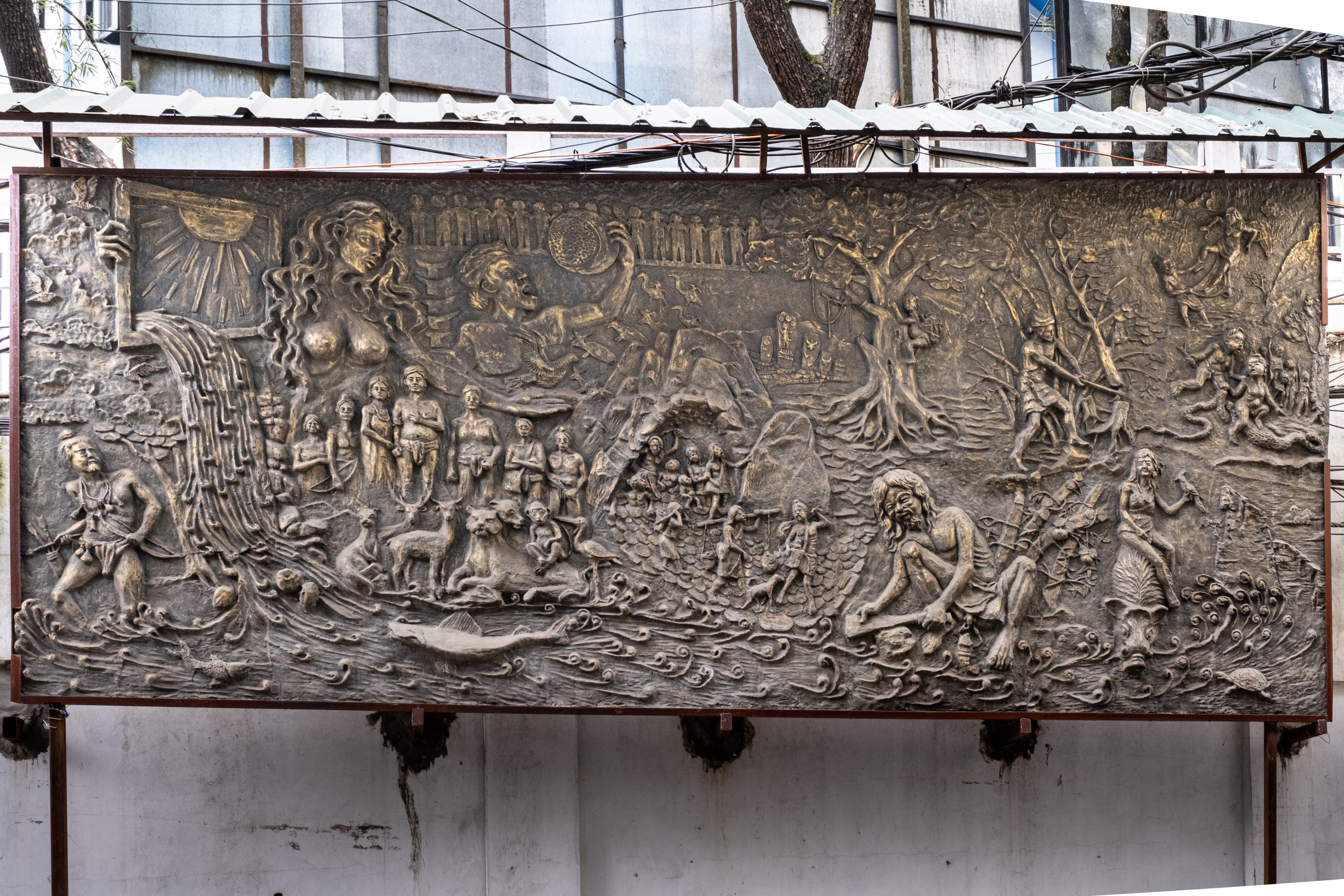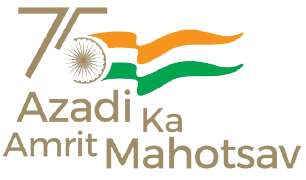The first panel depicts the origin of the world as propounded by our ancestors, which are illustrated in certain Mizo folktales. In this panel, we can see Khuangzingnu outlining the plan for the formation of earth, different types of living creatures, as well as Thlanrawkpa and his family. In the background, we can also see the spirit of a Hauhulh chief attempting to swallow the moon. Thus, this panel depicts the formation of elements in the natural world as told by our forefathers.
We can also see in this panel Chhinlung which is said to be the origin of the Mizo people. It is said that different Zo tribes emerged from the Chhinlung cave and saw the light of day for the very first time here. Thus, we see some people looking bewildered, some looking petrified, while others look absolutely delighted. Looking closely, we see certain figures from Mizo legends and folktales such as Chhurbura, Mualzavata, Chemtatrawta, Liandova and his brother, Chawngtinleri and Sichangneii. These figures and folktales are a treasure trove for our culture, and it can be said that they do indeed form a cornerstone that constitute the Mizo identity.
Art and culture are two sides of the same coin, and they are intrinsically connected. Art is a mirror for culture, and culture is often manifested through art. For us Mizos too, our culture and unique view of the world are often manifested through our folktales, traditional dances, our handicrafts and other such endeavors. The manner in which we preserve such gems, as well as how we view them will determine how our culture is preserved and disseminated.


















